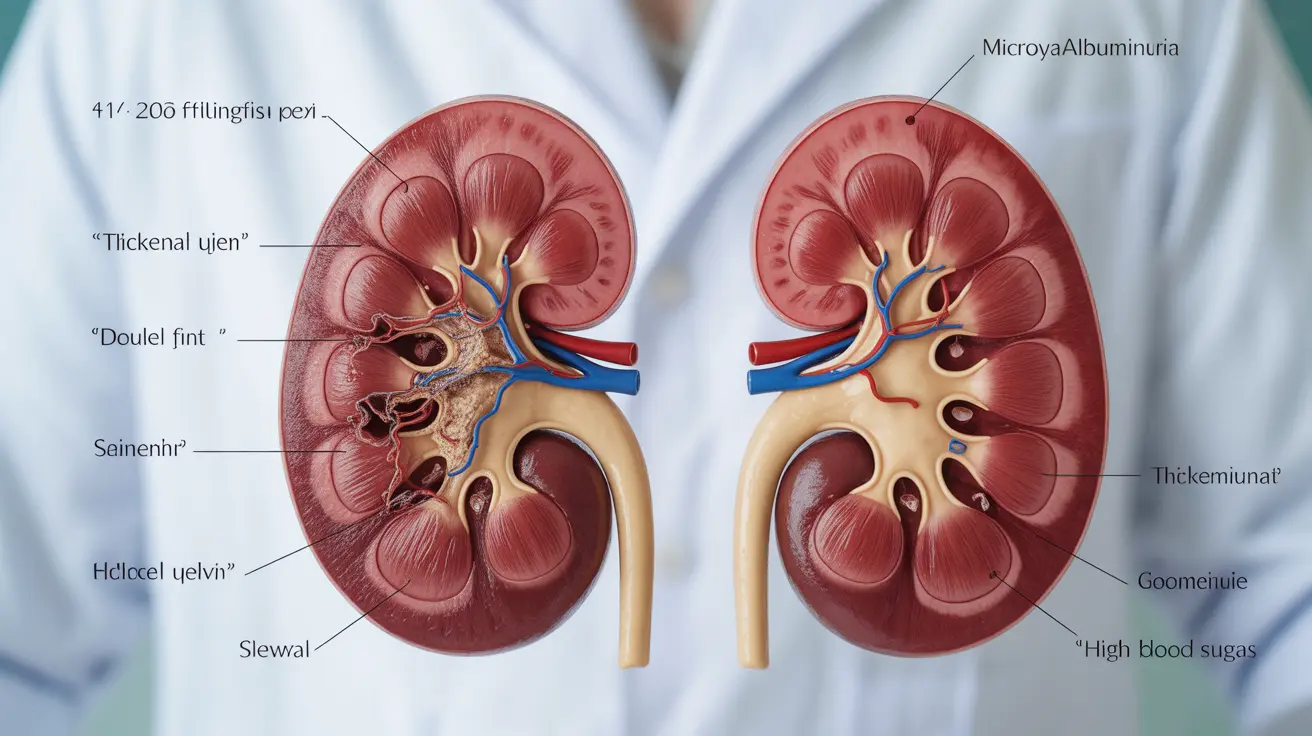Diabetic nephropathy, a serious kidney-related complication of diabetes, often develops silently in its early stages. Understanding the first signs and knowing when to seek medical attention can significantly impact treatment outcomes and help preserve kidney function. This comprehensive guide explores the early warning signs, detection methods, and crucial information about this condition.
Understanding Diabetic Nephropathy
Diabetic nephropathy occurs when high blood sugar levels damage the blood vessels in your kidneys over time. This damage affects the kidneys' ability to filter waste from your blood effectively. Early detection is crucial because kidney damage can be slowed or prevented with proper intervention.
The First Signs and Early Detection
The earliest indication of diabetic nephropathy is often detected through routine medical tests before physical symptoms appear. The primary early marker is the presence of small amounts of protein (albumin) in the urine, a condition called microalbuminuria.
Key Early Indicators
- Microalbuminuria (30-300 mg of albumin in 24-hour urine)
- Slightly elevated blood pressure readings
- Mild swelling in feet and ankles
- Changes in urination patterns
Silent Progression: Why Regular Testing Matters
Because diabetic nephropathy can develop without noticeable symptoms, regular screening is essential. Healthcare providers typically recommend annual kidney function tests for people with diabetes, though some may need more frequent monitoring based on their risk factors.
Risk Factors That Require Closer Monitoring
- Long-standing diabetes
- Poor blood sugar control
- High blood pressure
- Family history of kidney disease
- Smoking
- Obesity
The Five Stages of Diabetic Nephropathy
Understanding the progression of diabetic nephropathy helps patients and healthcare providers make informed decisions about treatment and lifestyle modifications.
Stage Breakdown
- Stage 1: Kidney hyperfiltration with normal albumin levels
- Stage 2: Silent stage with normal albumin levels
- Stage 3: Early diabetic nephropathy (microalbuminuria)
- Stage 4: Overt diabetic nephropathy (macroalbuminuria)
- Stage 5: End-stage kidney disease
Prevention and Management Strategies
Taking proactive steps to manage diabetes and protect kidney function is crucial. Several lifestyle modifications and medical interventions can help slow or prevent the progression of diabetic nephropathy.
Key Management Approaches
- Strict blood sugar control
- Blood pressure management
- Healthy diet low in salt and protein
- Regular exercise
- Medication compliance
- Regular medical check-ups
Frequently Asked Questions
What is the first sign of diabetic nephropathy and how is it detected?
The first detectable sign of diabetic nephropathy is typically microalbuminuria, where small amounts of protein appear in the urine. This is detected through a specific urine test called a microalbumin test, which can identify kidney problems before physical symptoms develop.
What early symptoms might indicate diabetic nephropathy even if kidney function seems normal?
Early symptoms may include subtle swelling in the feet and ankles, slightly elevated blood pressure, changes in urination patterns, and fatigue. However, many people don't experience noticeable symptoms in the early stages, which is why regular screening is crucial.
How is diabetic nephropathy staged and what do the stages mean for kidney health?
Diabetic nephropathy progresses through five stages, from early changes in kidney function to end-stage kidney disease. Each stage represents increasing levels of kidney damage and protein in the urine, with corresponding changes in treatment approaches and monitoring requirements.
How often should people with diabetes get tested for early signs of kidney damage?
People with diabetes should get tested at least once a year for kidney damage. However, those with additional risk factors or existing kidney problems may need more frequent testing, as determined by their healthcare provider.
What lifestyle changes or treatments can help manage or slow the progression of diabetic nephropathy?
Key management strategies include maintaining tight blood sugar control, controlling blood pressure, following a kidney-friendly diet, regular exercise, and taking prescribed medications consistently. Working closely with healthcare providers to monitor and adjust treatment plans is essential.




